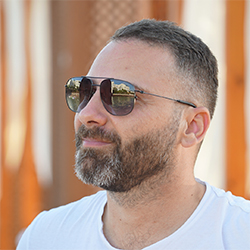Easter in Crete: Traditions, Celebrations and Food on a Greek Easter
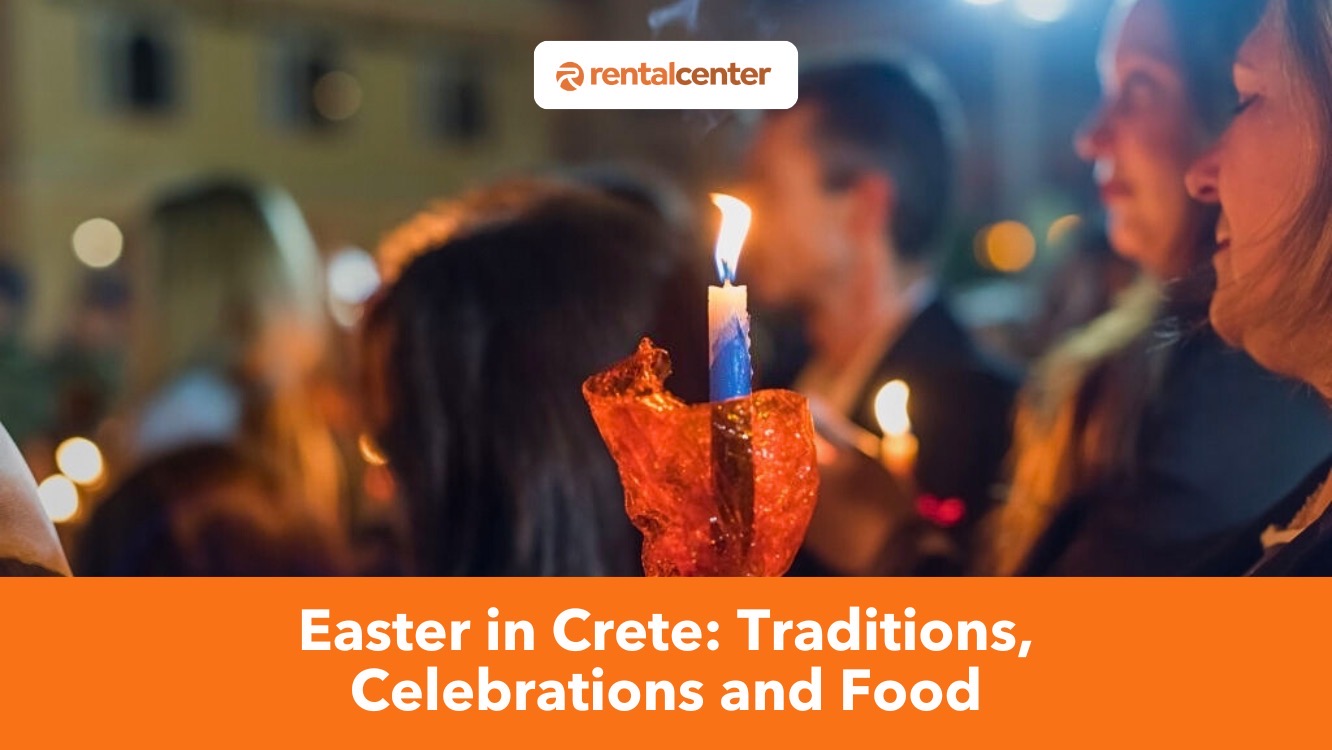
Easter in Greece and Crete is celebrated with deep spiritual significance, blending Orthodox and festive practices. In 2025, Easter Day falls on April 20th, with Holy Week starting on April 14th. The celebrations in Crete include dyeing red eggs on Holy Thursday, Epitaphios processions on Good Friday, and the midnight Resurrection Service on Holy Saturday. Spring, mainly during Easter, is an excellent time to visit Crete. The mild weather and cultural events make it ideal for exploring villages, hiking, or visiting historical sites. The Easter traditions and the welcoming spirit of Crete create a memorable experience for visitors.
What are Easter Traditions in Crete?
Easter in Crete combines Orthodox traditions with cultural and festive practices, solemnity, and celebration. Holy Week emphasizes devotion, fasting, and preparation for the Resurrection. On Holy Thursday, eggs are dyed red to symbolize blood and resurrection, later used in the “tsougrisma” game on Easter Sunday, where participants crack eggs to represent triumph over death. Easter Sunday features communal gatherings centered on roasting lamb on a spit, fostering family and neighborly bonds. Traditional dishes like magiritsa soup and kalitsounia are prepared, while feasts, music, and dancing around long tables highlight togetherness and gratitude. Gift exchanges are integral, with lambades, tsoureki, and baskets of local products like olive oil, honey, and wine that can be brought in souvlaki shops. For children, Easter egg hunts add a playful element to the traditions.
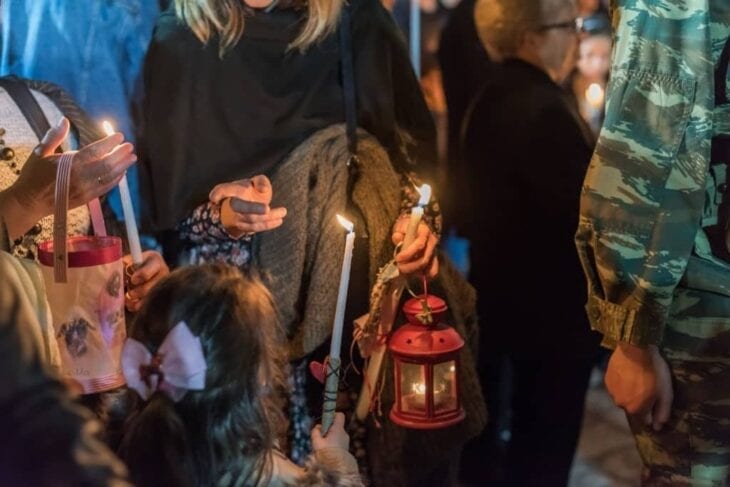
How do Cretans celebrate Holy Week (Megali Evdomada)?
Holy Week in Crete, also known as Great Holy Week, Great Week, Passion Week, or Kali Megali Evdomada, is a spiritual and culturally significant period leading to Orthodox Easter. It begins on Palm Sunday with church services and processions featuring palm fronds. Each day of the week holds rituals, including solemn evening services and symbolic acts, such as the dyeing of red eggs on Holy Thursday to represent the blood of Christ. Good Friday is a day of mourning, marked by the decoration and procession of the Epitaphios (Christ’s funeral bier). Holy Saturday culminates in the midnight Resurrection Service (Anastasi), where churches are darkened until the Holy Flame is shared among the congregation. This is followed by joyous celebrations with fireworks and traditional greetings of “Christos Anesti” (Christ is Risen). Fasting is observed throughout the week, and preparations like baking tsoureki (sweet bread) and kalitsounia (cheese pies) take place.
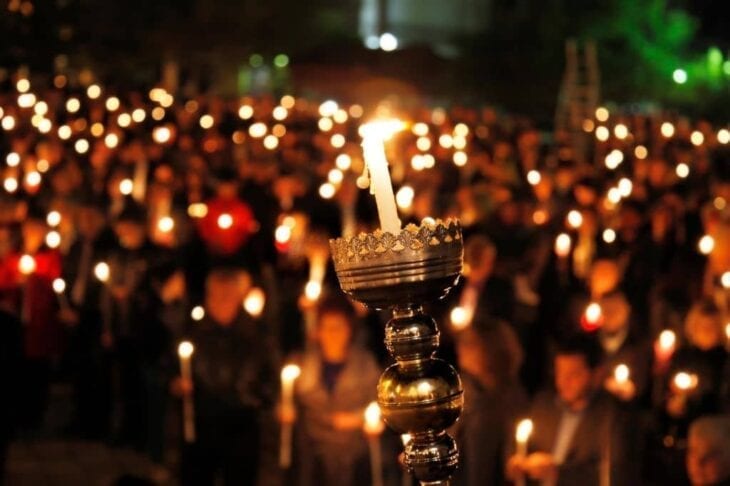
How is Good Friday (Megali Pareskevi) celebrated in Crete?
Good Friday, or Megali Paraskevi, in Crete, is a day of mourning centered on the Epitaphios procession and solemn rituals. Church services begin with decorating the kouvouklion (bier symbolizing Christ’s tomb) with flowers. In the evening, the Epitaphios are carried through streets in a funeral-like procession led by clergy, accompanied by hymns, candlelight, and tolling bells. In some villages, the procession pauses at cemeteries to honor the deceased. Strict fasting is observed all day. After the parade, communities gather modestly to share simple fasting foods, such as lentil soup and raki.
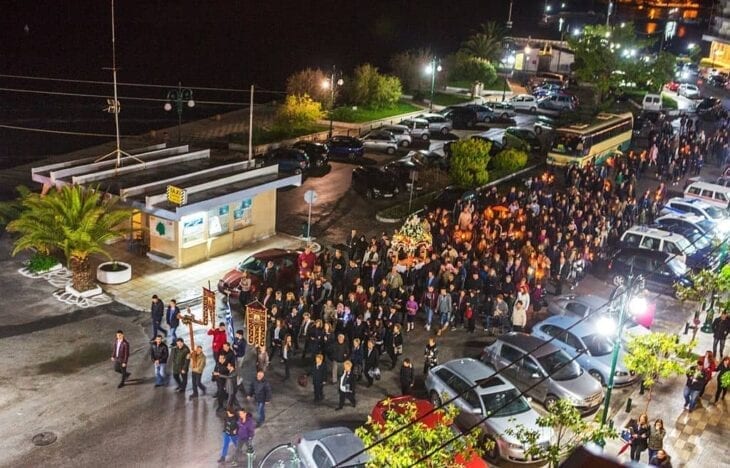
How is Easter Sunday celebrated in Crete?
Easter Sunday in Crete is celebrated with great joy and communal spirit. Families rise early to prepare lamb or goat, traditionally roasted on an outdoor spit. Men often tend to spit, while others gather to share wine and stories. By midday, extended families and friends gather around long tables to enjoy the feast, which includes roasted lamb, kokoretsi (offal wrapped in intestines), fresh salads, and desserts like tsoureki. Music, dancing, and laughter fill the day as people visit multiple celebrations to exchange greetings and share in the festivities.
How is Easter celebrated in Chania?
As with any other part of Crete, Easter in Chania is a special and festive occasion. The streets are decorated, the people are in a good mood and everyone is celebrating. Many people from all over Greece come to Chania to celebrate Easter with their family and friends.
On Easter Sunday, the main event is the procession of the Epitaph through the streets of Chania. The Epitaph is a wooden platform with religious icons and a statue of Jesus on it. The procession starts at the church of St. Nicholas.
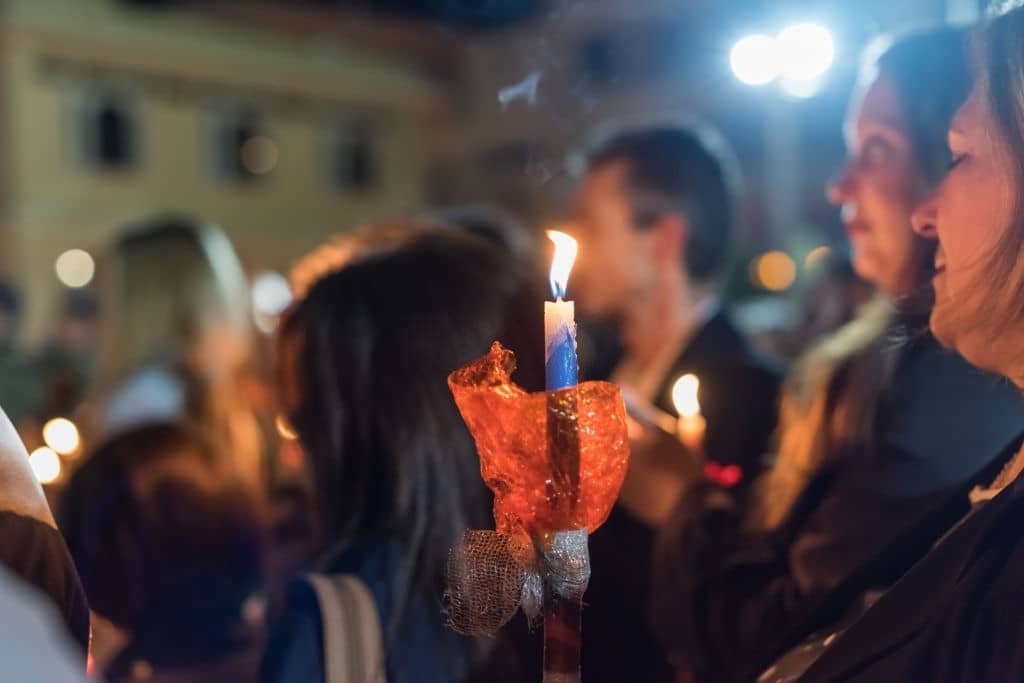
The traditional Easter food in Chania consists of lamb, magiritsa, potatoes, and various other vegetables. The lamb is usually roasted on a spit and is served with Greek salad and pita bread. You can try this dish at any of the restaurants in the Old Town since many of them serve traditional Easter food during the season.
How is Easter celebrated in Heraklion?
Heraklion follows a similar tradition as Chania, when it comes to celebrating Easter. Streets are filled with people, the atmosphere is festive, and Orthodox churches are holding special services.
On Good Friday, the main event is again the procession of the Epitaph. The procession in Heraklion starts at the church of Agios Minas and Agios Titos and goes through the streets of the city. You can expect to see many people gathered around to watch the procession and take photos.
If you’re looking for traditional Easter food, you can find it in any of the restaurants in Heraklion. You won’t have to worry about stores and restaurants closing because of the holiday since most of them remain open. You can find Easter food such as koulourakia, and tsoureki in any bakery or try the traditional dish of roasted lamb.
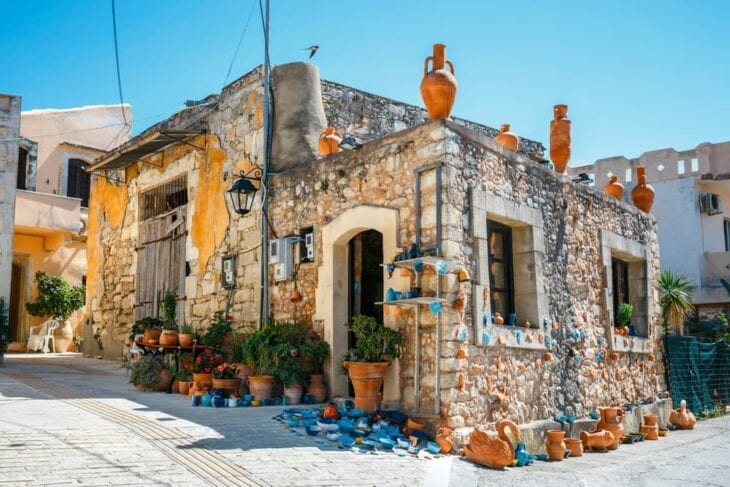
What are Easter Foods to Try in Crete?
Cretan Easter foods are a highlight of the celebrations. Key dishes include tsoureki (sweet braided bread), red-dyed eggs symbolizing blood, kalitsounia (cheese pies), and margaritas soup made from lamb offal to break the Lenten fast. The centerpiece of Easter Sunday is spit-roasted lamb or goat, accompanied by kokoretsi, fresh salads, and desserts like koulourakia cookies.
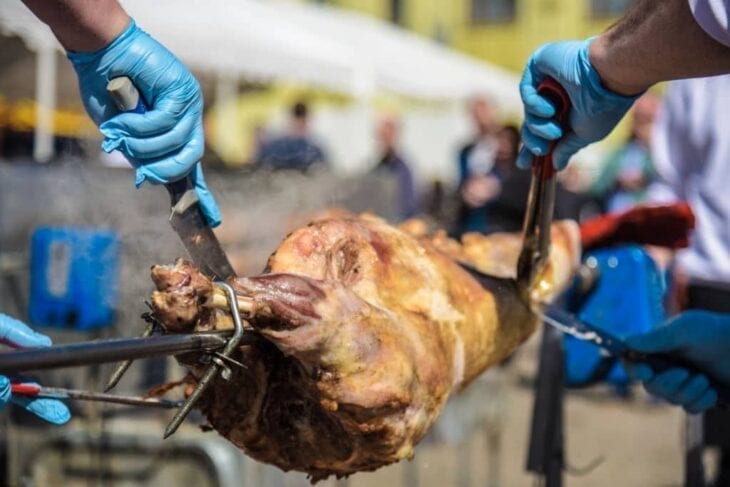
What is the schedule for Greek Easter 2025?
Greek Orthodox Easter is a time of deep spiritual reflection and joyous celebration centered around the Resurrection of Christ. The week-long observance, Holy Week (Megali Evdomada), is filled with meaningful rituals, hymns, and communal gatherings. Below is the schedule for Easter 2025.
| Day | Date | Description |
| Holy Monday | April 14, 2025 | Start of Holy Week. |
| Holy Tuesday | April 15, 2025 | Second day of Holy Week. |
| Holy Wednesday | April 16, 2025 | The third day of Holy Week. |
| Holy Thursday | April 17, 2025 | Includes the dyeing of red eggs. |
| Good Friday (Megali Paraskevi) | April 18, 2025 | Day of solemn mourning. |
| Holy Saturday | April 19, 2025 | Preparations for the Resurrection. |
| Easter Sunday (Orthodox Pascha) | April 20, 2025 | A joyful celebration of Christ’s Resurrection. |
| Easter Monday | April 21, 2025 | Continuation of festive celebrations. |
How important are local tradition events in Crete?
Local traditional events in Crete, such as those during Greek Easter. These traditions connect the past to the present, promoting a sense of community and preserving Cretan heritage. Easter, the most significant holiday in Greece, is celebrated with deeply rooted customs like Epitaphios processions, the lighting of the Holy Flame, and communal feasts featuring spit-roasted lamb and traditional dishes like kalitsounia and tsoureki. The burning of Judas effigies, red-dyed eggs symbolizing blood, and traditional dances further highlight the interpretation of Greek Easter traditions. These local traditions in Crete reinforce religious faith and offer visitors a chance to engage themselves in Cretan culture.
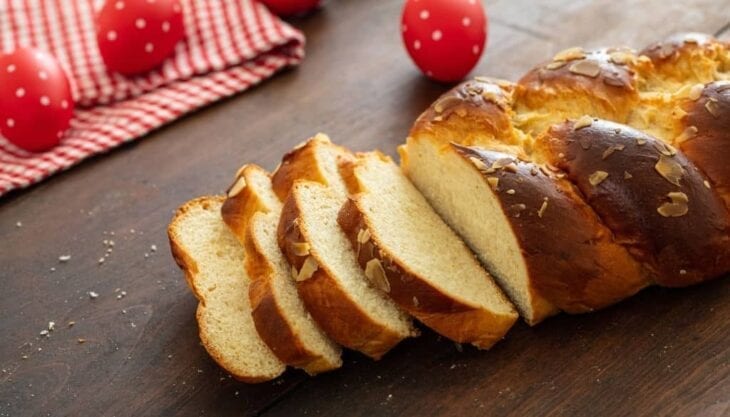
Is Easter a good time to visit Crete?
Yes, Easter is a good time to visit Crete, as the island comes alive with traditions. Orthodox Easter is the most significant holiday in Greece. On Holy Saturday, the midnight Resurrection Service unites communities, beginning in darkness before sharing the Holy Flame, fireworks, and the proclamation of “Christos Anesti” (Christ is Risen). Visitors can partake in traditions like the tsougrisma egg-cracking game and enjoy the Easter Sunday feast, featuring spit-roasted lamb, kalitsounia (cheese pies), and tsoureki (sweet bread). April’s mild weather, with temperatures between 17°C (63°F) to 20°C (68°F).
Does Greece celebrate easter?
Yes, Greece celebrates Easter, the most significant religious holiday in the country. Greeks follow Orthodox Easter traditions, which include solemn Holy Week services, the lighting of the Holy Flame at midnight on Holy Saturday, and celebrations on Easter Sunday with feasting, music, and dancing. Customs like dyeing eggs red, the tsougrisma egg-cracking game, and preparing traditional foods such as tsoureki bread and spit-roasted lamb are central to the festivities.
How do Greece celebrate Easter?
Easter in Greece is celebrated with a mix of solemnity and joy. Holy Week begins with church services and processions, culminating in the Resurrection Mass on Holy Saturday at midnight when the Holy Flame is shared among the congregation. On Easter Sunday, families gather to roast lamb or goat on a spit and enjoy traditional dishes like kokoretsi and magiritsa.
Which Greek island is best for Easter?
The best Greek island for Easter depends on your preferences. Corfu is famous for its traditions, such as throwing clay pots (botides) to mark the Resurrection and its philharmonic orchestras during processions. Patmos offers deeply spiritual celebrations with reenactments of the Last Supper and other religious ceremonies at the Monastery of St. John. Hydra features a Sea Epitaph procession where the bier is carried into the sea for blessings.
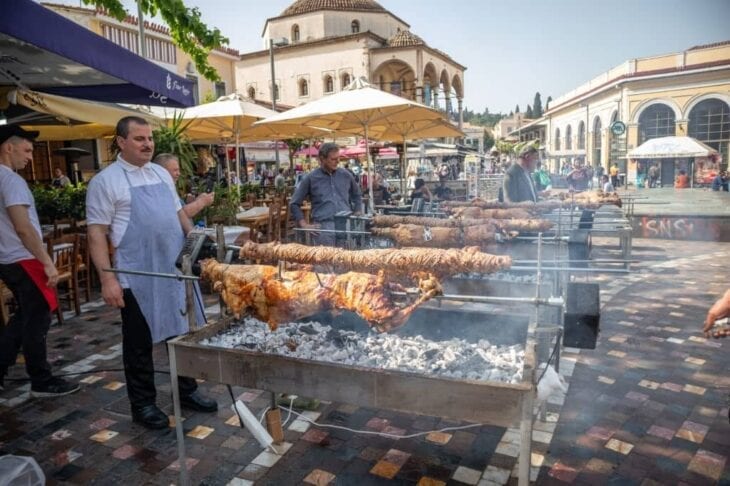
How important is local tradition events in Crete?
Local Traditions in Crete offer a rich tapestry that connects the past to the present. They give insight into the social, cultural, and religious norms that have shaped Cretan identity. Festivals and food play a significant role in this, especially during the summer when the island becomes a hub of cultural activity. Visiting Crete during this time provides a unique opportunity to experience its vibrant local traditions.
Local traditions in Crete extend to its cuisine, deeply influenced by its agricultural history. The island offers a range of fresh ingredients like olive oil and herbs, contributing to dishes like souvlaki and kalitsounia. Cretan traditions allow visitors to capture the essence of the island’s history and culture.
They give insights into the social, cultural, and religious behaviors that shape the Cretan identity. Local traditions in Crete also highlight the significance of storytelling and cultural expression, often passed down through myths like the tale of King Minos and the Minotaur. These narratives, along with art forms like pottery and jewelry, convey deeper societal messages and contribute to the island’s unique cultural richness.
Last updated on February 6th, 2025








